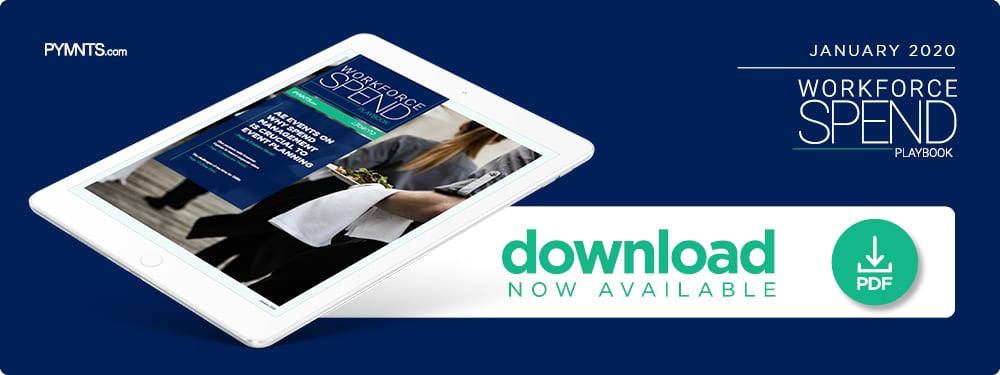Deep Dive: How Firms Can Avoid Costly Mistakes Come Tax Season

Spring may seem far away, but U.S. businesses are likely already feeling tax season’s pressures. Filing is exhausting and complicated for individuals, and businesses experience those tax difficulties to a far greater degree.
Companies need all relevant information on hand when filing, which can be difficult if manual expense tools are being used to track cash flows and employee spend. A significant number of firms — notably small- to medium-sized businesses (SMBs) — still use such systems, as 25 percent of smaller firms stated in 2018 that their payroll involved pen-and-paper methods. Manual payroll processes require employees to submit paper receipts and fill out paper expense reports, generating an annual pile that SMBs must manage before April 15.
These outdated processes are frustrating and could also lead to costly mistakes. Paper-heavy expense and payroll systems can obscure important compliance data, for example, or might otherwise complicate tracking if SMBs or their employees qualify for exemptions. These systems also drive up administrative costs for companies needing to audit or verify each piece of relevant financial information before it is reported to tax authorities.
Digital expense systems that empower quicker and more efficient spend reporting and data consolidation could fix many of these issues, especially as U.S. SMBs need to remain compliant with increasingly complex financial regulations. Such tools can automatically categorize necessary information from receipts and reports, significantly cutting down on the $26.63 per report businesses spend on average manually scanning and processing.
SMBs And Manual Tax Frustrations
Digital financial tools saw rapid increases in usage and functionality over the past decade, highlighted by the rising number of consumers who automate their daily bills through online services or track spending through mobile applications. Many of these tools are designed for consumers and not employers, however, and B2B financial innovation has proceeded at a much slower pace.
That more-measured approach is not necessary, though. Companies have more compliance concerns than individual consumers do, but many SMBs are now stuck with outdated and outstripped expense systems that cannot keep up with the massive flood of information generated daily. This imbalance can have significant costs during tax season, when businesses need to quantify their yearly operations while accurately recording all tax information their employees need. Healthcare, retirement and Social Security contributions must be packaged with more common payroll information and securely distributed to each worker, then recorded once again in business filings. Unusual or unexpected expenses could also crop up each year.
Manual expense reporting processes can make it much harder for SMBs to check every necessary box in the time they have to file. Unexpected expense reports may be unintentionally overlooked by an overworked financial manager, for example, leaving SMBs scrambling to fill in gaps before sending in financial documents. Missing information can also lead to mistakes or misunderstandings, and unseen or misfiled reports for unusual expenses can result in SMBs thinking they have more cash than they do — a disastrous outcome.
Paper expense reports also leave SMBs vulnerable to fraud — intended or otherwise — from their employees, something they may not realize in time. A 2018 report found that 21 percent of the fraud SMBs see is expense reimbursement fraud from their own employees. Such schemes have a decent chance of slipping past SMBs that lack accurate, current views of their cash flows.
Digitizing these processes can ease SMBs’ tax frustrations. Systems utilizing automated technologies to sift through a year’s worth of data can quickly calculate employee withholdings, for example. They can also categorize mandatory deductions — federal and state income, healthcare or court-ordered payments, among others — that businesses must take from employees’ paychecks for easier expense reporting.
Taxes And The Automation Benefit
Inaccurately reporting or managing deductions can have dire consequences for SMBs, as many lack the resources to weather fines from state or federal financial authorities. Automation could limit employee fraud, as the software will log and categorize employees with expense purchases. Online spend management software can be tailored to individual SMBs’ and employees’ needs, too, assisting the latter in reporting unexpected expenses or receiving answers to complex tax questions.
Automation’s benefits are clear, but the cost and infrastructure constraints mean several years may pass before all SMBs adopt the technology. Digital spend management tools are already more available than they were even half a decade ago, and many SMBs appear to be taking advantage of them. Just 25 percent of them were reliant on manual systems in 2018, compared to 75 percent in 2015. The remaining quarter that struggles with manual spend management now has more offerings to leverage, and it is likely that digital expense tools’ rise will cause manual systems’ further decline over the next few years.

